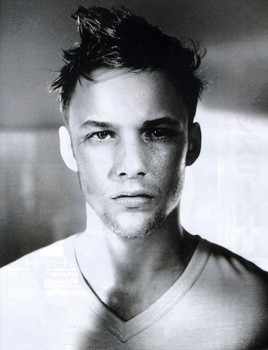In the pantheon of child actors who transitioned into adulthood, few narratives are as compelling and tragic as that of Brad Renfro. Born on July 25, 1982, this young talent catapulted to stardom with his astonishing performance in “The Client” (1994), a legal thriller based on the novel by John Grisham. Renfro’s portrayal of a young boy caught in a web of adult intrigue set the foundation for a promising career, revealing a remarkable depth that belied his tender age.
As audiences watched him evolve, they witnessed not just an actor, but a harbinger of potential. Subsequent roles in films such as “Apt Pupil” (1998) and “Ghost World” (2001) showcased his versatility, embodying complex characters grappling with moral dilemmas. Each performance resonated with an authenticity that endeared him to viewers, firmly establishing him as a formidable figure in Hollywood.
However, the narrative of Brad Renfro is not solely an ascent to fame; it is also a cautionary tale. As his success burgeoned, so too did the pressures associated with youthful celebrity. Struggling against the pernicious grip of substance abuse, Renfro’s legal troubles and health issues cast a long shadow over his career. Reportedly, he battled personal demons that frequently clouded his judgment and hampered his professional aspirations. This dichotomy—his raw talent juxtaposed with vulnerability—fascinated public discourse and fueled tabloid speculation.
Renfro’s untimely demise on January 15, 2008, at the age of 25, was a stark reminder of the fragility of life, particularly when under the unflinching gaze of fame. His death not only marked the end of a promising career but ignited an important conversation regarding the responsibilities of Hollywood toward its younger stars. Where is the support structure for these children, thrust into the limelight at such a tender age? Such questions remain pertinent even today, as echoes of his story resonate through the industry.
In retrospect, remembering Brad Renfro involves examining more than just his filmography; it beckons an exploration into the art of acting itself. His story prompts reflection on the broader implications of childhood stardom, the dichotomous pressures of fame, and the delicate balance between personal and professional life. In commemorating his contribution to cinema, we must also acknowledge the darker undercurrents that permeated his life, encouraging a narrative that serves as both a tribute and a sobering reminder.
For fans and newcomers alike, diving into Renfro’s films offers an insightful glimpse into the heart of an actor who embodied the spirit of his roles with unparalleled courage. His legacy endures, continuing to provoke admiration and contemplation long after the final credits have rolled.
